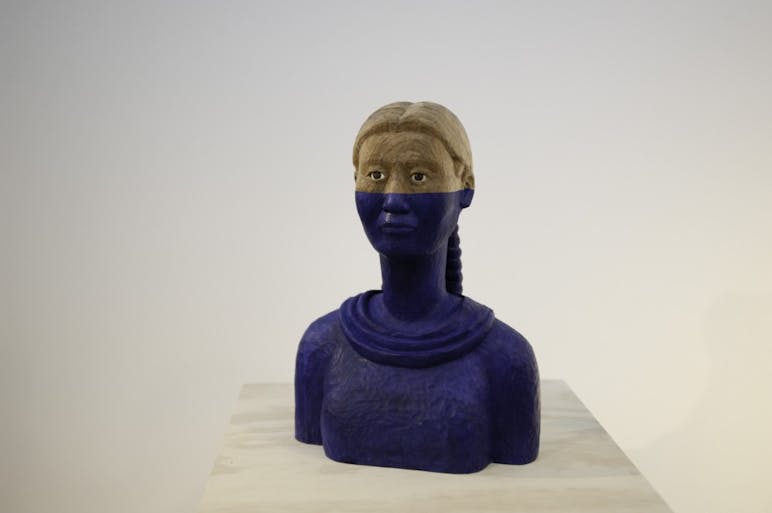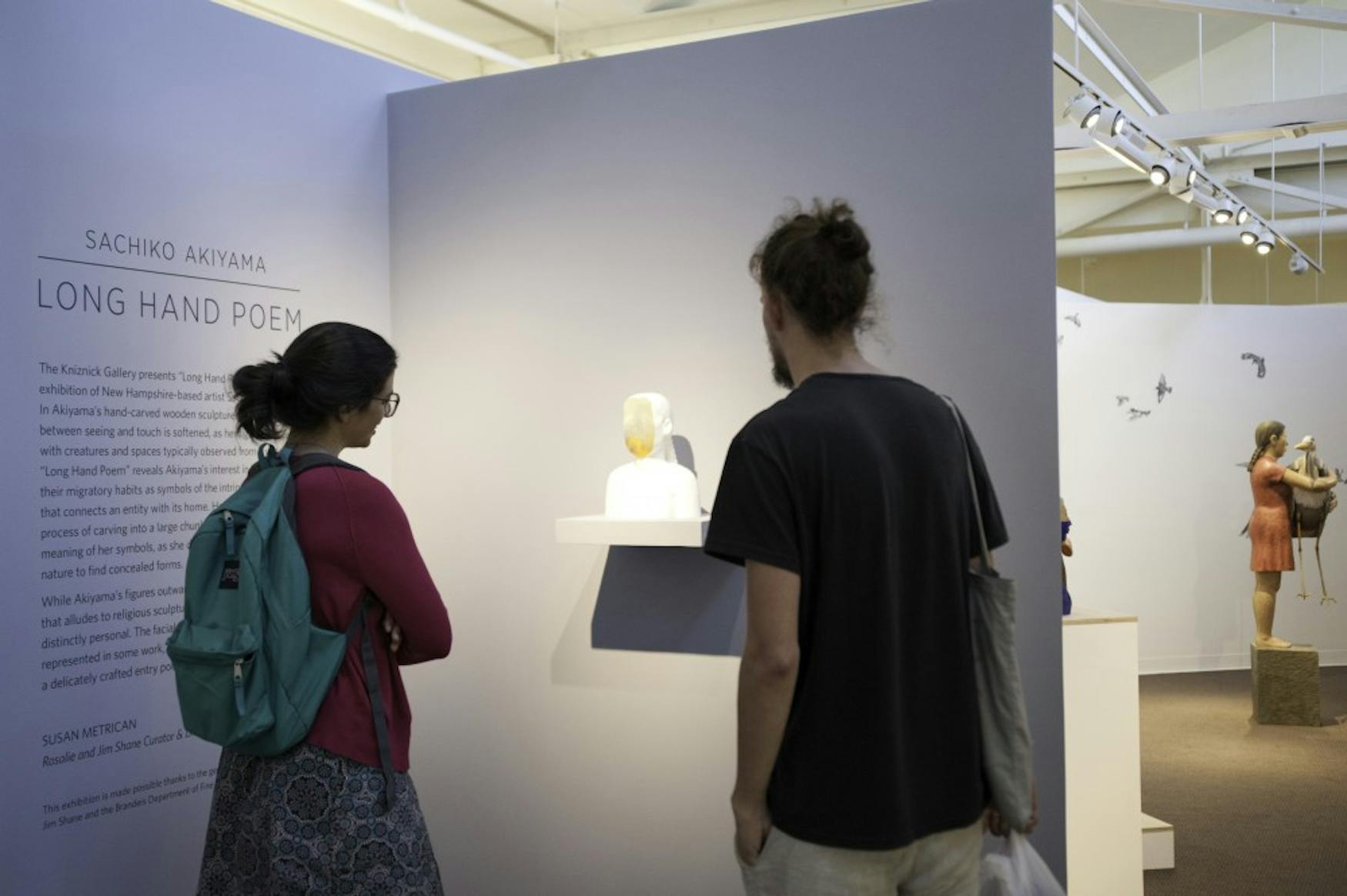Kniznick exhibits elusive wooden sculpture
This past Wednesday, the Kniznick Gallery in Epstein had the privilege of hosting a very compelling speaker: Sachiko Akiyama post-bacc ’00, a New Hampshire-based artist whose solo exhibition “Long Hand Poem” is currently displayed in the gallery.
The exhibit was curated by Susan Metrican, the Rosalie and Jim Shane Curator & Director of the Arts at the Kniznick Gallery. The talk began with Metrican introducing Prof. Karen Hansen (WMGS) as the new director of the Women’s Studies Research Center. Afterward, she introduced Akiyama.
Akiyama’s work has been displayed in the United States and abroad, including at the Akino Fuku Museum in Hamamatsu, Japan. She is currently a professor of sculpture at the University of New Hampshire and was previously an assistant professor of sculpture at Boston University.
Akiyama presented the unique ideas of her artwork, which mainly consists of wooden sculptures and other pieces that incorporate different forms of three-dimensional art. She said that much of her work explores how different qualities of art relate to each other. She enjoys making pieces that combine prints and sculptures, and creating an interaction between two-dimensional and three-dimensional art in a single sculpture.

SCULPTURE OF A GIRL: Much of Akiyama’s work shows figures obstructed or melded with images of the natural world.
Akiyama used a PowerPoint presentation to showcase pictures of her work as she described her motives behind her pieces. As evident in the presentation, many of her pieces are life-size figures of women made of wood. Akiyama explained that she wants her figures to represent internal portraits, or the internal life of a person. She also explained that weight and lightness are important metaphors within her work.
Akiyama’s work is heavily influenced by religious and spiritual sculptural traditions. She explained that some of her inspiration comes from Giovanni Bellini, her favorite Renaissance painter, as well as the art of the Notre Dame Cathedral in Paris. One of my favorite pieces of hers was a series of sculptures inspired by those at Notre Dame. In this piece, she replaced sculptures of saints with those of her family members, each of them holding different birds representative of their personalities.
Birds are a common theme within her work. Another significant work of hers was a piece of her holding a blue heron, which she explained was inspired both by a Pablo Picasso painting of a blue heron and by a blue heron she used to see while running in Brookline, Massachusetts during the time she lived there. Akiyama’s parents are Japanese, and the crane is an important symbol in Japanese culture. One of her sculptures features her holding an American version of a Japanese crane.
The most interesting and ambiguous part of the sculpture is the slight movement in the crane’s legs. She explained that she often chooses symbols of ambiguity to display in her work, as she likes her art to be open to interpretation.
Another unexpected aspect of her art that Akiyama mentioned was the scale she likes to use when creating her sculptures. She said that she likes her sculptures to be big enough to take up space, but small enough to represent a world that feels different from the viewer’s own. She does not like to make life-sized sculptures, because she wants her viewers to feel like they are looking into a separate world when they view each work.
Akiyama has also found interesting ways to combine landscape and figure in her sculptures. Many pieces feature the body of a human, but with the head replaced by mountains or other landscape visuals.
One of the most interesting techniques she used in her works was sawing off the very front of the face of sculptures — so that the front of the face is completely flat and blank — and painting a landscape onto that plane.
After the presentation, Akiyama opened the room to questions, which allowed the audience to gain even deeper insight into her work. One person asked why she prefers to work with wood. Akiyama explained that when she uses wood, she feels as though she is searching for something within the block of wood like an archaeologist, digging into the wood until it becomes a full form.

BUST IN BLUE: Akiyama’s wooden bust appears dipped in navy paint, splitting up the visual plane of the piece.
When using wood, she feels a sense of slowness and discovery while creating her work, something she finds meditative. When asked about how her move from Massachusetts to New Hampshire has changed her, she explained that she is now much closer to nature and has consequently incorporated more of the natural world into her work. She ended the question-and-answer by reiterating that the goal of her work is not to understand but rather to invoke ambiguity.
Akiyama’s exhibition will be on display in the Kniznick Gallery until Oct. 27, a sure feast for the viewer, evoking question and mystery one must experience in person.



Please note All comments are eligible for publication in The Justice.